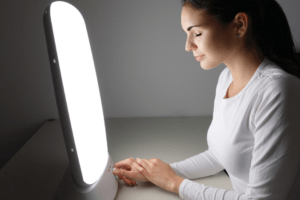The days are shorter and the temperatures are much more brisk these days. Yes, Old Man Winter is finally making his appearance for the year. Though these cooler days are filled with holiday cheer and merriment by some, many can find wintertime to be bleak and topped with sadness. Suffering from SAD, or seasonal affective disorder, can be a challenging and distressing time for a person whose mood is easily affected by the change of seasons.
Keep reading to find out more about this fairly common form of depression.
What is seasonal affective disorder?
Seasonal affective disorder (also called SAD) is described as a kind of depression that follows the seasons. The most common type of SAD is called winter depression, and usually begins in late fall or early winter and goes away by summer. With that said, some people do struggle with summer depression, which typically begins in the late spring and lasts until early summer.
SAD usually starts during adulthood. The risk of SAD increases with age with women more likely to be affected than men.
There is no clear cause of SAD. However, less sunlight and shorter days are thought to be linked to a chemical change in the brain and may be part of the cause of SAD. Melatonin, a sleep-related hormone, also may be linked to SAD.
What are the symptoms of wintertime SAD?
Winter depression can affect people differently, but some of the common symptoms sufferers can experience are:
● daytime fatigue
● difficulty concentrating
● feelings of hopelessness
● increased irritability
● lack of interest in social activities
● lethargy
● reduced sexual interest
● unhappiness
● weight gain
How is SAD diagnosed?
A doctor or psychiatrist will ask you several questions about your symptoms and when you first noticed them. People with SAD tend to experience symptoms every year as opposed to symptoms that appeared following a traumatic incident or specific situation.
 What treatments are available?
What treatments are available?
Because winter depression is believed to be caused by the lack of sunlight, light therapy may be suggested by your therapist or doctor. If your doctor suggests that you try light therapy, you will use a special light box or a light visor that you wear on your head like a cap. You will sit in front of the light box or wear the light visor each day. Generally, light therapy takes about 30 minutes a day in the fall and winter, when you’re most likely to be depressed. If light therapy helps you, you’ll keep using it until more sun is available in the springtime. Stopping light therapy too soon can make the symptoms come back.
Medication and behavior therapy may also be suggested.
St. George Medical Clinic’s behavioral health service offers various forms of treatment plans for those struggling with SAD.
For more information on SGMC’s behavioral health services, call (304) 478-3339.